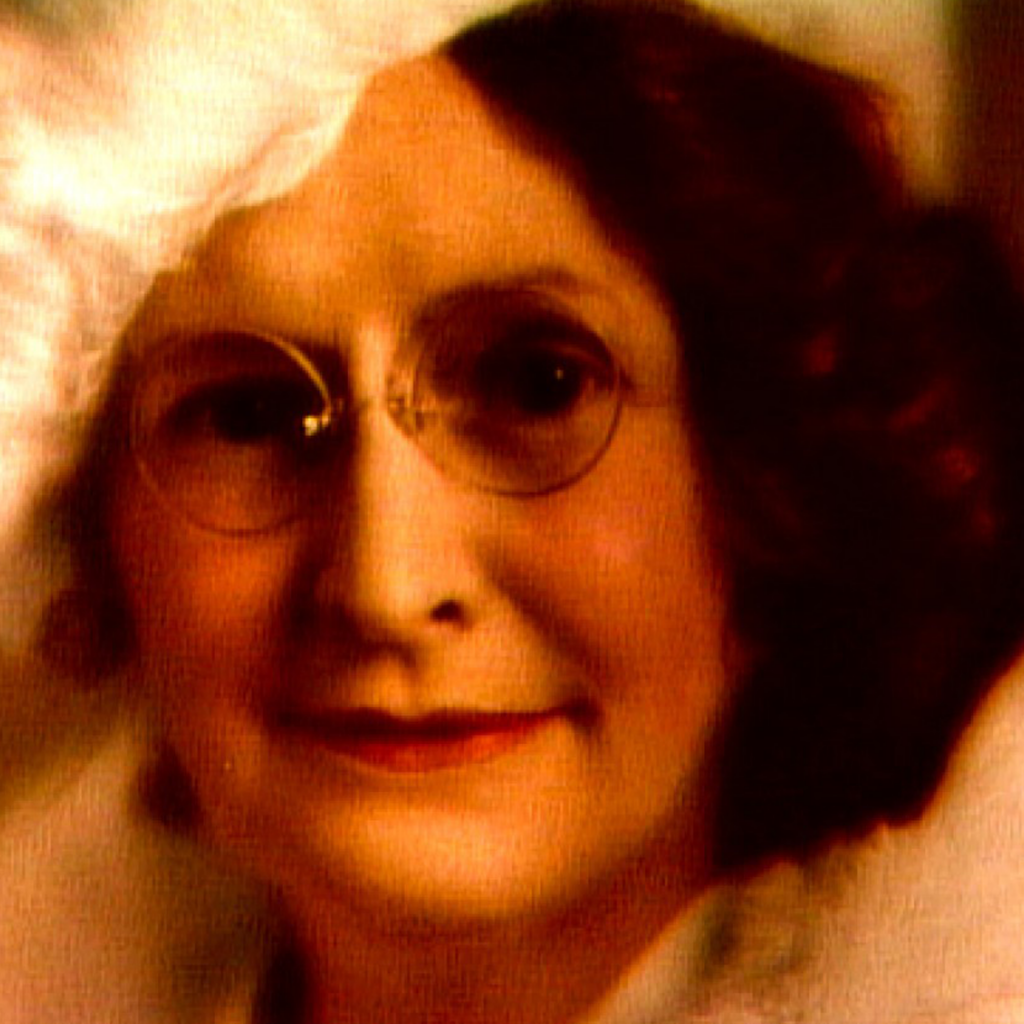Carrie Wooster Tingley.
Photo Credit: Illustration by Joe Kimmel.
Carrie Wooster Tingley
1877 - 1961
Bernalillo County
Sharing a commitment to the sick and disadvantaged, she and her husband secured WPA funds and strong support from President Roosevelt to build a hospital in New Mexico for children with polio. When it opened in 1938, the Carrie Tingley Hospital for Crippled Children was a state-of-the-art facility.
Carrie Wooster was born in Bowling Green, Ohio, on May 20, 1877, to a wealthy family. Diagnosed with tuberculosis, which had stricken her father, she traveled to the southwest in 1911 with her mother. Intending to reach Arizona, mother and daughter left the train in Albuquerque when Wooster became too sick to travel farther. Wooster’s fiancé, Clyde Tingley, joined them soon after.
Once she recovered from her illness, the couple married on April 21, 1911. Over time, they became prominent citizens of Albuquerque, engaged in so many civic works that Clyde Tingley became known as the unofficial mayor of the city. He continued his interests through politics, successfully running for governor in 1935.
With the Depression causing economic hardship in New Mexico, Governor Tingley became a strong proponent for New Mexico on a federal level, lobbying successfully to receive federal funds through the Works Progress Administration and other Depression-era projects for the state. These funds enabled construction of new schools, public buildings, highways, and parks. As work progressed, Governor Tingley formed a relationship with President Roosevelt, and the two met and corresponded on projects often.
Clyde and Carrie Tingley shared a commitment to the sick and disadvantaged, particularly children with disabilities. President Roosevelt, himself a victim of polio, similarly believed the government should take an active role in creating facilities for the care of children with paralysis.
Using WPA funds and with strong support from Roosevelt, Governor Tingley set out to build such a hospital in New Mexico, primarily to serve children stricken with polio. A site was selected in the town of Hot Springs, now Truth or Consequences, in part to take advantage of the natural geothermal waters in the town. According to lawyer and historian William A. Keleher:
“Although Tingley was enthusiastic about the proposed hospital project, the credit for the establishment of such an institution really belonged to the Governor’s wife, who had been a frequent visitor at St. Anthony’s Hospital in Las Vegas, New Mexico, a pioneer in the treatment of infantile paralysis. Impressed with the need for such facilities in New Mexico, Mrs. Tingley persuaded the Governor to ask for help in Washington. President Roosevelt promised Tingley that not only would he help him obtain funds for such a project but would get for him without cost the services of the architects who had designed the hospital at the Georgia Warm Springs Foundation where the President had been a patient, and had established his “little White House.” (Keleher 2008)
When it opened in 1938, the Carrie Tingley Hospital for Crippled Children was a state-of-the-art facility. Historian David Kramer describes the hospital layout and grounds:
“Three wings with sleeping quarters, a dining room, therapy rooms, a pool and terraces were all on a single floor with only nurses quarters occupying a second floor. The complex employed what was then termed the Spanish Colonial Style… Surrounding the complex were spacious lawns. Evergreens, poplars, and shrubs lined a long U-shaped driveway as well as flanked the complex, and informal groves were located randomly about the lawns, giving the grounds the appearance of an oasis set amidst the creosote and cactus of the Upper Chihuahua Desert.” (Kramer 1994)
Carrie Tingley made many visits to the children at the hospital and brought them toys around the holidays.
In 1981, much to the consternation of residents of Truth or Consequences, the operations of the hospital were moved to Albuquerque. It remains in operations under the name Carrie Tingley Hospital on the campus of the University of New Mexico, part of the UNM Hospital System, and is the only hospital in the state dedicated to the needs of “children and adolescents with complex musculoskeletal and orthopaedic conditions, rehabilitation needs, developmental issues and long-term physical disabilities.” (Carrie Tingley Hospital website)
The former hospital building in Truth or Consequences today serves as the New Mexico State Veterans’ Home under the administration of the New Mexico Department of Health.
Carrie Tingley died in Albuquerque on November 6, 1961, age 84. In her will, she left a large portion of her estate to charitable institutions.
On August 16, 2012, Governor Susana Martinez proclaimed September 2012 “Carrie Tingley Hospital 75th Anniversary Month.”
Sources:
Museum displays, Geronimo Springs Museum, Truth or Consequences. Visited May 2014.
Carrie Tingley Hospital website, accessed May 10, 2014. http://hospitals.unm.edu/hospitals/unmcth.shtml
Kalloch, Eunice and Ruth K. Hall. The First Ladies of New Mexico. Santa Fe, NM: The Lightning Tree, 1982.
Keleher, William A. Memoirs: Episodes in New Mexico History, 1892-1969. Santa Fe, NM: Sunstone Press, 2008.
Kramer, David, Ph.D. The Historic and Architectural Resources of the New Deal in New Mexico. Santa Fe, NM: New Mexico Historic Preservation Division, June 1994.
Melzer, Richard, Ph.D. Buried Treasures: Famous and Unusual Gravesites in New Mexico History. Santa Fe, NM: Sunstone Press, 2007.







